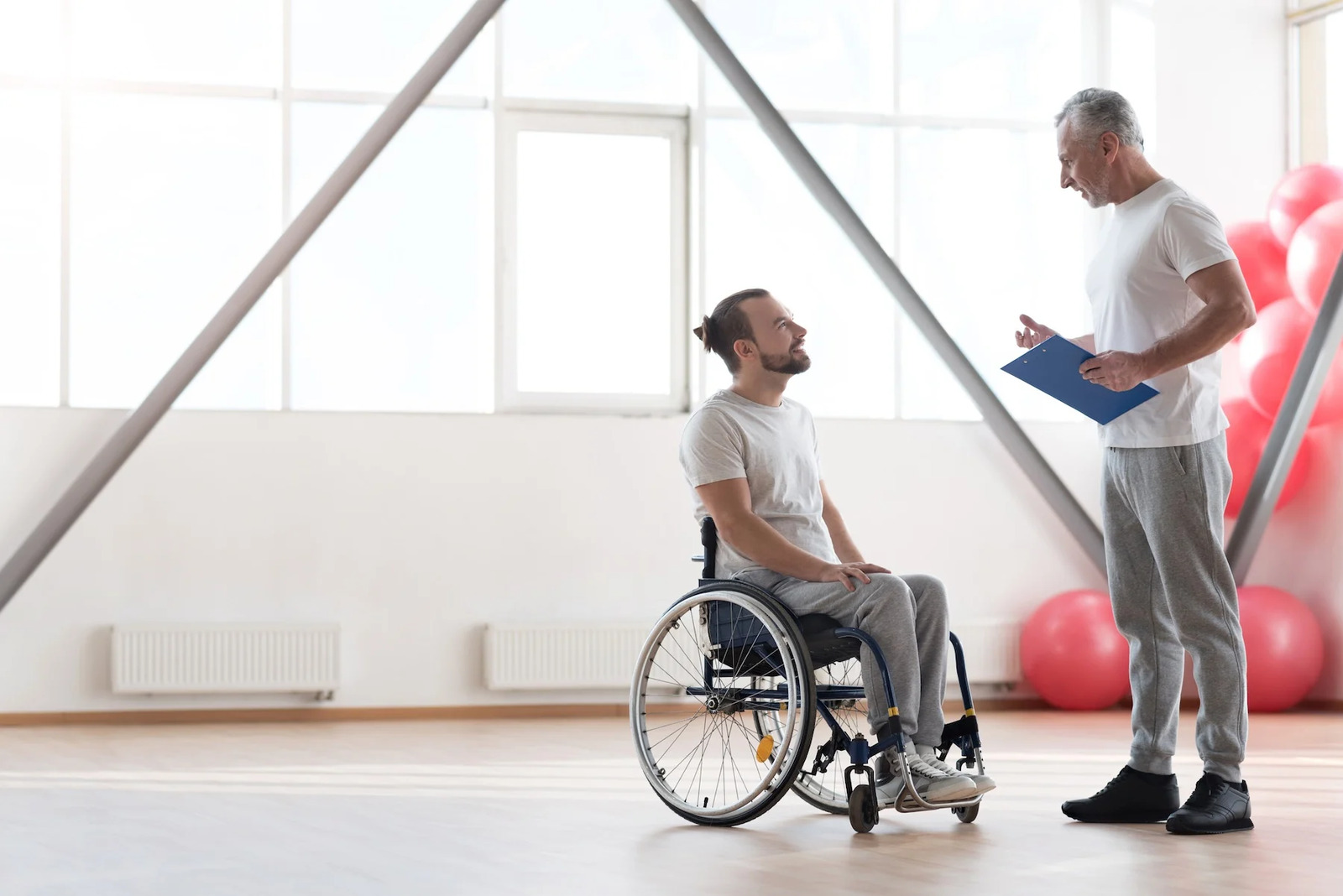How Spinal Cord Rehab Should Include the Pelvic Floor

Pelvic pain is a significant concern for individuals with spinal cord injuries (SCI), as it can interfere with daily activities and reduce overall quality of life. This pain is often linked to factors such as muscle spasms, sensory loss, bladder and bowel dysfunction, and altered muscle tone and control. Physiotherapy offers various techniques that can help manage and alleviate pelvic pain by addressing these underlying causes. Additionally, for those dealing with bladder issues due to SCI, a key component of treatment is bladder retraining and the rehabilitation of pelvic muscles.
Understanding Spinal Cord Injury and Its Impact
A spinal cord injury can be classified as either complete or incomplete, with significant implications for how the body functions afterward:
Complete SCI refers to a total loss of motor and sensory function below the level of injury, resulting in total paralysis and loss of sensation. This can affect both the ability to control movement and the ability to feel sensations, including the ability to control the bladder and bowel.
Incomplete SCI occurs when there is still some degree of function or sensation below the injury site. Individuals with incomplete SCI may retain varying degrees of control over motor functions and sensations, which can influence their experience with bladder and pelvic pain.
Both complete and incomplete SCI can result in significant pelvic pain due to muscle imbalances, spasms, and dysfunctions in bladder and bowel control. However, those with incomplete SCI may have more potential for regaining some function through physiotherapy techniques, including bladder retraining and pelvic floor rehabilitation.
The Role of Bladder Retraining in SCI
Bladder dysfunction is one of the most common complications after SCI, affecting a large number of individuals. The injury can interrupt communication between the brain and the bladder, leading to problems such as urinary incontinence, retention, or loss of sensation. Retraining the bladder and pelvic floor muscles is critical for improving bladder control and reducing the discomfort often associated with SCI.
Bladder retraining focuses on re-educating the bladder and pelvic muscles to function more efficiently. This approach may differ depending on the severity of the injury and whether the SCI is complete or incomplete.
For Complete SCI
In cases of complete SCI, where there is no voluntary control over bladder function, the goal is to manage and control bladder emptying using alternative methods. Some of the key techniques include:
Intermittent Catheterization: This technique involves the use of a catheter to drain the bladder at regular intervals. By following a scheduled approach to catheterization, individuals can avoid urinary retention, which can contribute to bladder infections and pelvic discomfort.
Indwelling Catheters: In some cases, an indwelling catheter (a catheter left in place for an extended period) may be used, though it carries an increased risk of infections. Physiotherapists can assist individuals with learning proper techniques for managing the catheter to minimize complications.
Reflex Bladder Training: Although individuals with complete SCI may not have voluntary bladder control, reflex bladder emptying can still occur through the use of techniques such as tapping or electrical stimulation of the bladder. These techniques help stimulate the bladder to empty on its own, using the spinal reflex arc.
For Incomplete SCI
Individuals with incomplete SCI may still have some preserved function, which allows for more dynamic approaches to bladder retraining. These techniques aim to enhance the voluntary control of the bladder and reduce the need for external aids. Some strategies include:
Timed Voiding and Bladder Training: A physiotherapist may guide individuals through scheduled voiding programs, where the bladder is emptied at regular intervals to help prevent retention and encourage normal bladder function. This method aims to gradually increase bladder capacity and control by developing a regular routine.
Pelvic Floor Muscle Training: One of the most critical aspects of bladder retraining for individuals with incomplete SCI is pelvic floor rehabilitation. The pelvic floor muscles are responsible for controlling the bladder and urethra, so strengthening these muscles can improve the ability to hold and release urine. Kegel exercises are commonly used to help individuals learn to contract and relax these muscles, promoting better bladder control.
Biofeedback: Biofeedback is often used in conjunction with pelvic floor exercises to help individuals better understand and control their pelvic floor muscles. By using sensors that monitor muscle activity, biofeedback helps the individual gain awareness of the pelvic floor and provides real-time feedback during exercises. This can lead to improved coordination and muscle strength, ultimately improving bladder control.
Physiotherapy Techniques for Pelvic Pain Relief
Managing pelvic pain, especially when linked to bladder dysfunction, is a significant component of post-SCI rehabilitation. Various physiotherapy techniques can be employed to address pain and improve overall pelvic health.
- Manual Therapy and Myofascial Release
Individuals with SCI often experience muscle tightness, spasms, or soft tissue restrictions in the pelvic region. Physiotherapists use manual therapy techniques, such as myofascial release and trigger point therapy, to release tension in the pelvic floor muscles and surrounding soft tissues. This helps reduce pelvic discomfort and improve muscle flexibility, which is essential for bladder retraining.
- Electrical Stimulation
Electrical stimulation therapy (e-stim) is particularly useful for individuals with SCI, as it helps stimulate muscle contractions in the pelvic floor and other muscles that may have weakened after the injury. For those with incomplete SCI, e-stim can be used to facilitate muscle activation, improving bladder control and reducing pain caused by muscle spasms. E-stim is also effective in strengthening the pelvic floor muscles, which are vital for supporting bladder function.
- Stretching and Mobility Exercises
Post-SCI, muscle contractures or tightness in the pelvic region can lead to restricted movement and increased pain. Physiotherapists guide patients through stretching exercises to improve flexibility and release tension in the pelvic area. Stretching the hip flexors, glutes, and pelvic floor muscles can help alleviate pressure on the pelvic organs and reduce pain associated with bladder dysfunction.
- Strengthening the Core and Pelvic Floor
Core strength plays a vital role in pelvic stability and bladder control. In individuals with incomplete SCI, strengthening the abdominal, lower back, and pelvic floor muscles can improve pelvic alignment and reduce pain. Targeted pelvic floor exercises, like Kegels, help train the muscles to contract and relax effectively, supporting bladder function and reducing incontinence.
Conclusion
Pelvic pain and bladder dysfunction are common challenges for individuals with spinal cord injuries, whether complete or incomplete. Physiotherapy plays a critical role in managing these issues by offering a combination of bladder retraining techniques, pelvic floor rehabilitation, and pain-relief strategies. For individuals with complete SCI, managing bladder function may rely on catheterization or reflex stimulation, while those with incomplete SCI may benefit from more active approaches, including pelvic floor exercises and timed voiding programs. Regardless of the injury type, physiotherapy techniques such as manual therapy, electrical stimulation, stretching, and muscle strengthening can effectively alleviate pelvic pain and promote bladder health. Through a tailored physiotherapy plan, individuals with SCI can regain better control over their pelvic health, improving both comfort and quality of life.


